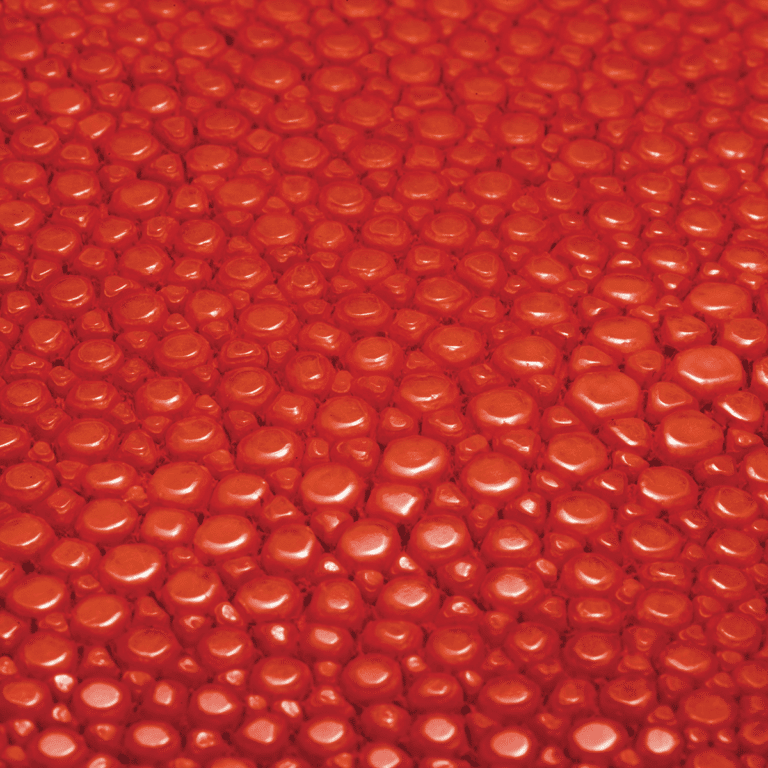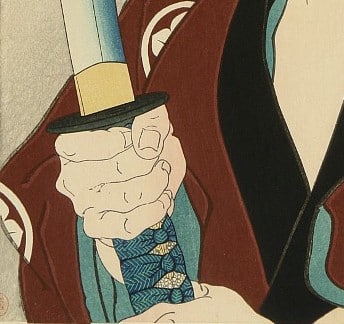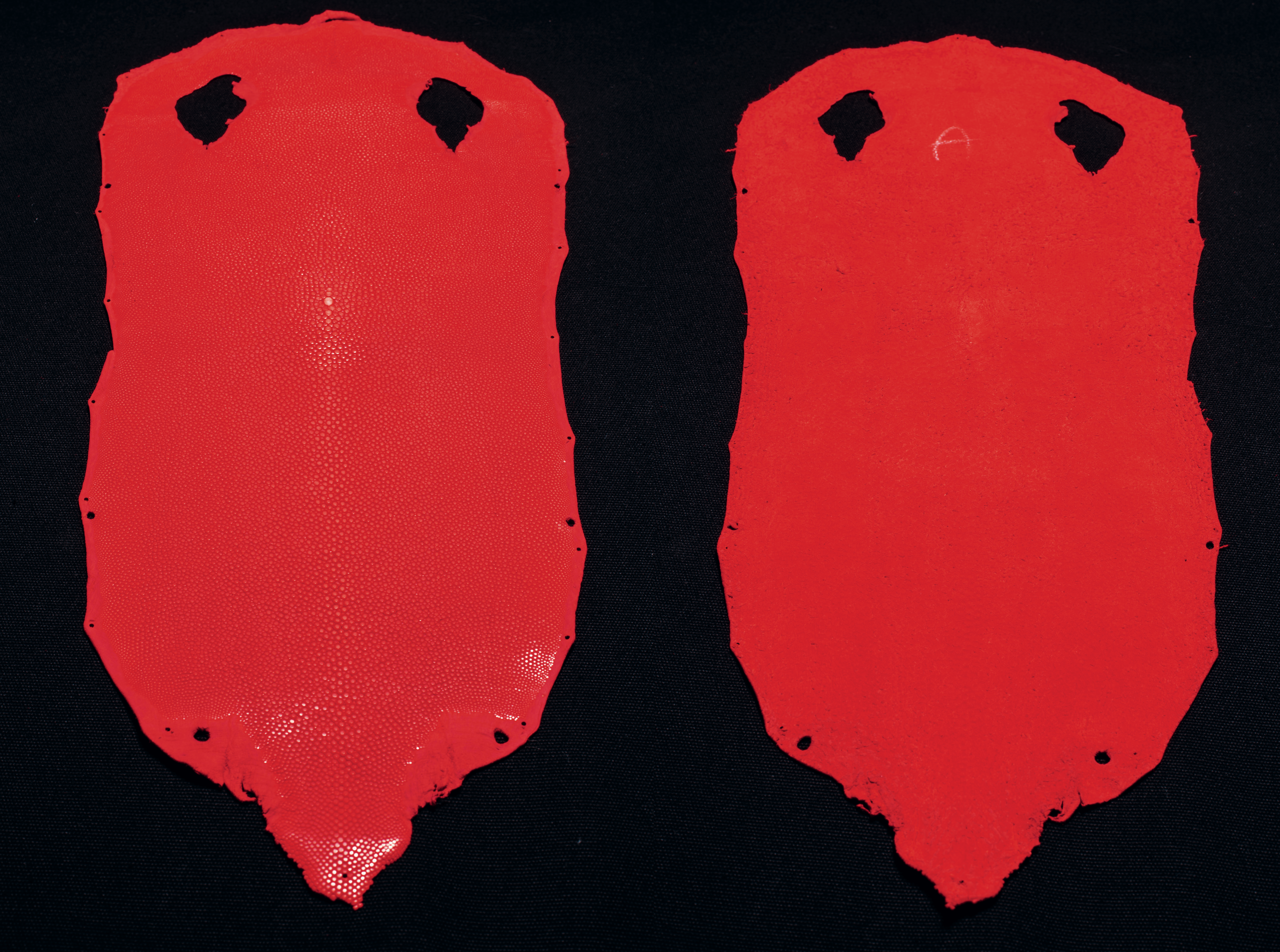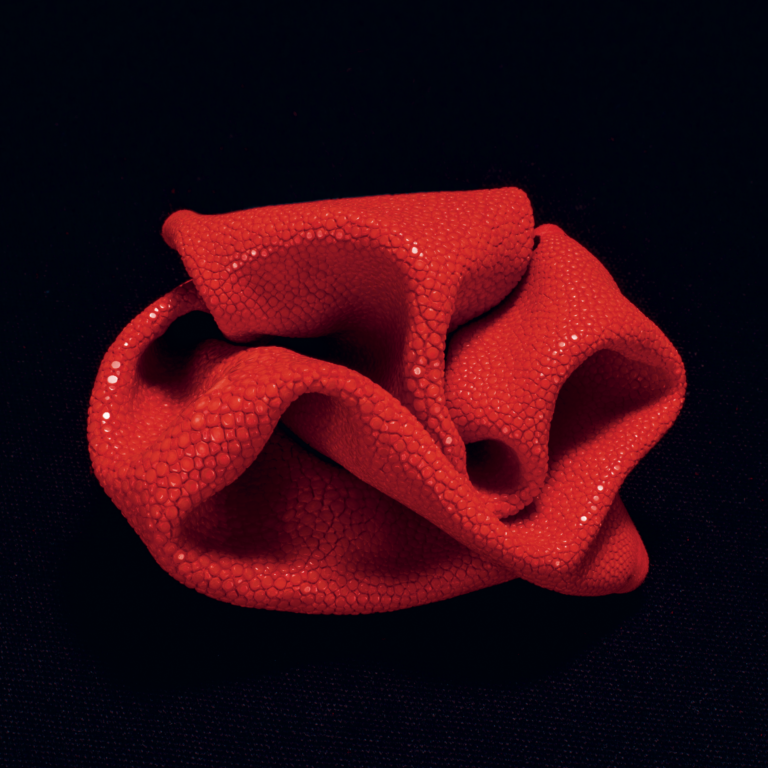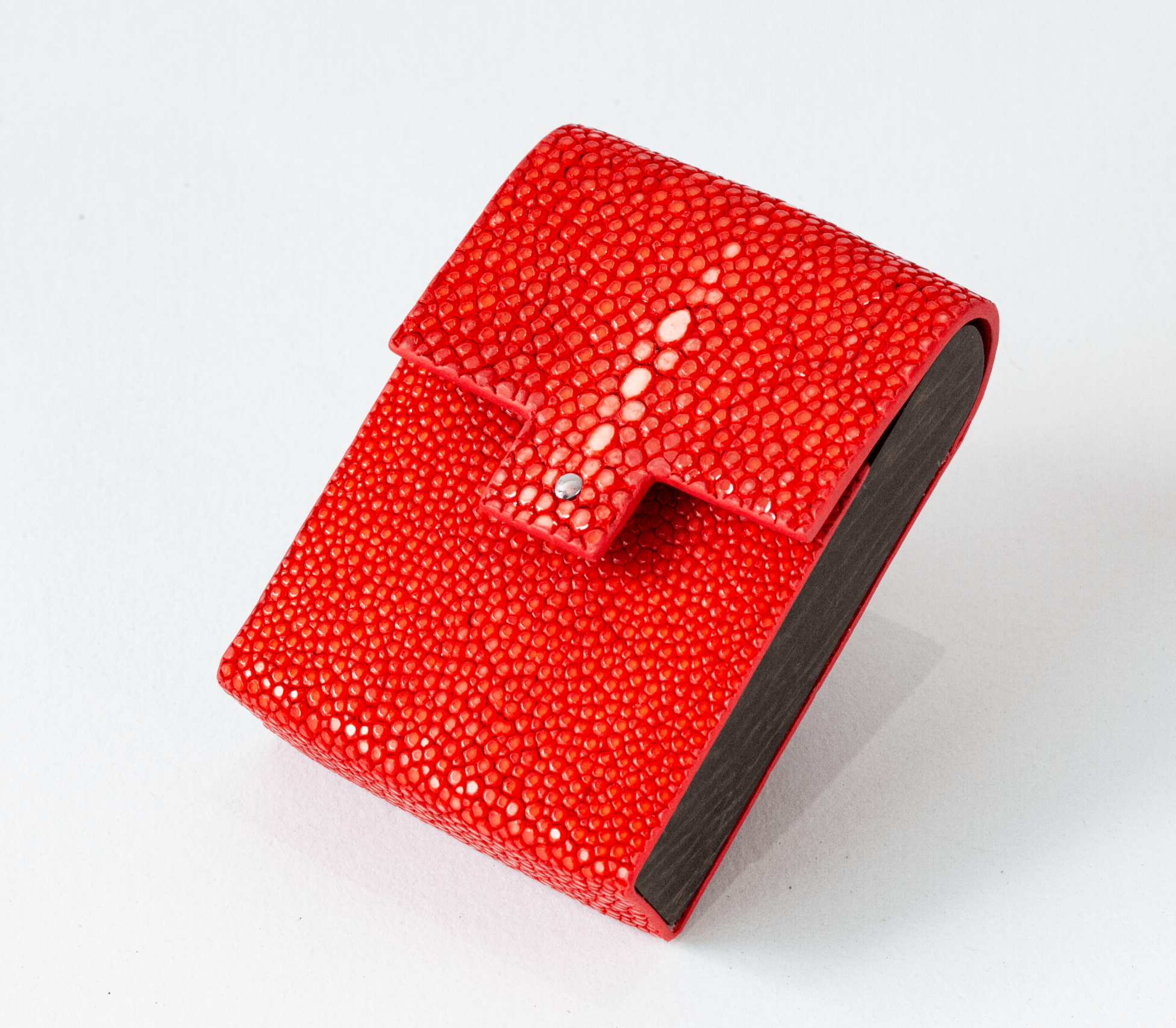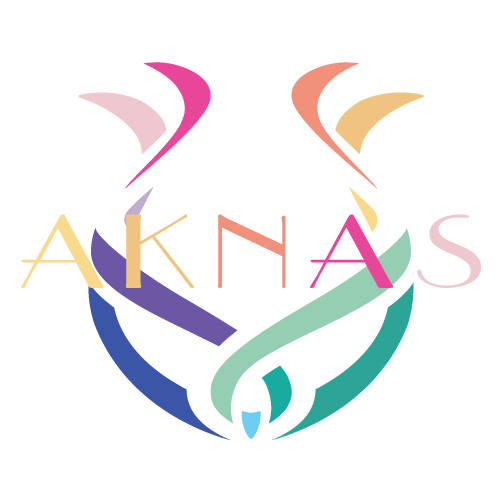
HISTORY
AKNAS is the working name of AKNAS Watchbands & Trading Co., Ltd, a Thailand Bangkok-based, Thai-French, high-end manufacturing workshop specializing in exotic leathers, such as stingray leather ( galuchat / shagreen), python leather and more.
Starting in 2001 with exclusively producing watchbands for Swiss and North-American luxury watchmakers, owners, and collectors, the small but very specialized facility was immediately recognized for offering the highest quality and widest color range of deep-dyed galuchat, also known as stingray leather or shagreen; together with an unparalleled level of workmanship for this extremely complex material. The other exotic leathers used by the workshop are python leather and crocodile leather.
In 2005, building on this initial success, the workshop started producing small exotic leather accessories for women using its unique know-how, continually improving through R&D, and became known for producing designs in galuchat (stingray leather/ shagreen ), until then deemed either impossible or lacking finesse.
Since 2007, AKNAS proposes OEM, ODM, and Unfinished services to its clientele of brands and designers from around the world. Historically bent on quality, the following years saw breakthrough "savoir-faire", manufacturing techniques such as “groove-stitching”, and the development of Men’s lines.
In 2011, in addition to its manufacturing services, the workshop also developed its own "galuchat" only retail brand, Atelier AKNAS, in Japan with its own collection.
CITES ( www.cites.org )
The Convention on International Trade in Endangered Species of Wild Fauna and Flora, a.k.a. Washington Convention, is a multilateral treaty protecting endangered plants and animals since July 1, 1975.
Its aim is to ensure that international trade in specimens of wild animals and plants does not threaten the survival of the species in the wild, and it accords varying degrees of protection to more than 35,000 species of animals and plants.
Because it is a moral imperative, a sound sustainable approach to business, and the law, AKNAS scrupulously abides by the convention.
Our clients who start working with exotic leathers will need to obtain an import permit through their country’s relevant administration (contacts on the CITES website).
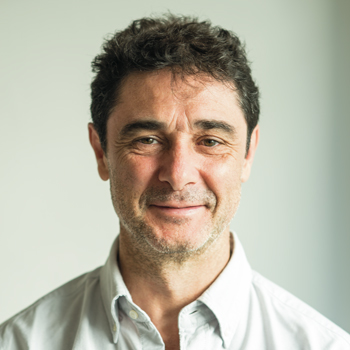
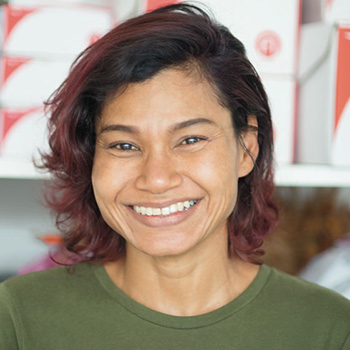
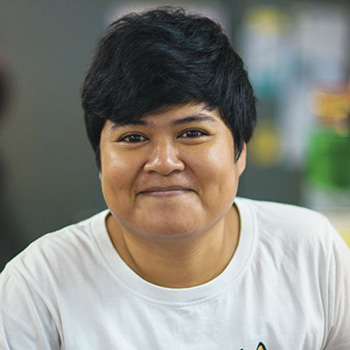
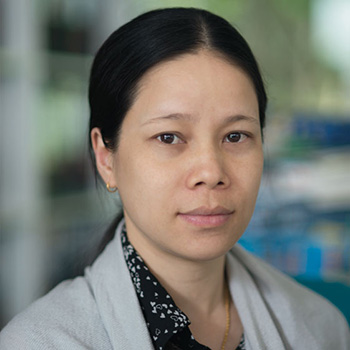


L'ATELIER
The workshop or "atelier" in French is on the first floor of a townhouse building in the north of Bangkok. With its office and showroom on the second floor overviewing it. It is compact, self-sufficient and the perfect configuration to ensure a continuous control chain from mood board to shipment. L'atelier is split into 5 departments:
- Quality Control
- Small & medium leather goods and handbags
- Cords, straps, and wearable accessories
- Home decoration (trays, boxes, furniture,...)
- Stock
Expectations are very high, but the atmosphere of the workshop is warm and friendly. The management model set in place by Nah and Stéphane has paid: most craftsmen have been there since the company's creation in 2001.

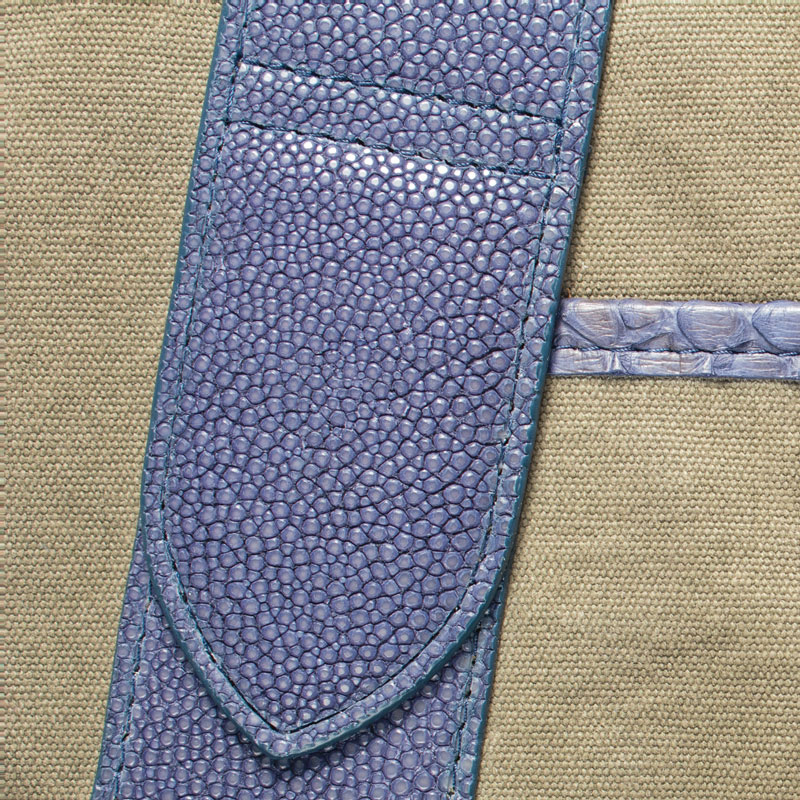
KNOW-HOW
or "Savoir-Faire", preferably evolved over centuries, is a very French approach to pretty much everything. AKNAS being half French, it is not surprising to find it at each step of the production of any creations of the workshop.
Each employee of the workshop was hired because of the very specific and deep craftsmanship they mastered. Their first 6 months with us is an in-house training that allows them to participate in the elaboration of the same design whether in paper-thin python, average-thick crocodile, or mind-bending tough stingray with a sustained and reliable quality of the outcome.
There is meticulous preparation and absolute respect for all the details in each and every phase of production.
- Selection of the leather & Cutting: the tanning color, leather size, and quality, and also our clients' pattern requirements (mosaics or geometric shapes) on box lids, trays, or game boards, which needs millimetric precision in choosing the correct leather. Stingray leather for example is picked according to its grain, its position, and tonality, much, in the same manner, a carpenter would prepare a work of marquetry.
- Skiving: one of the most important steps of production since the quality of a product’s finishings entirely depends on it and also requires very specific know-how.
- Whether it's gluing together or stitching together the pieces of the product: each leather, fabric, or material uses different methods and each requires its own know-how. It is also a work of precision, made one centimeter at a time, and ends with a final polishing that doesn’t leave anything to chance.
- Every finished item is submitted to a quality control stage as scrupulous as it is meticulous and which allows us to have a much lower-than-average rate of returns.
This combination of Know-Hows, the quality of our leathers, and our continuous quest for better techniques and quality are what makes AKNAS so particular.

GALUCHAT: A UNIQUE LEATHER
Galuchat, also known as stingray leather or shagreen, is a material halfway between the animal and the mineral and comes from various families of stingrays. It is the bead-clad central part of the animal's back that makes it so special. Dentine and enamel are what the beads are made of, the same material as our teeth, making it the hardest leather known.
- History
Although texts refer to its use in ancient Egypt and during the Chinese Han dynasty, the oldest artifacts using stingray skin are from 8th century Japan, with tanto and katana handles and sheaths as well as samurai armor decorations. At the time, the skins were not tanned and beads were not sanded, which provided a very good grip to the objects they covered. It was so rough that it was also long used as sandpaper by Japanese carpenters. It is still found in this aspect today in some sushi restaurants where it is used to grate wasabi.
After many tries, the first to successfully tan and dye stingray skin was Frenchman Jean-Claude Galluchat (with a double L), a Paris master upholsterer, in the second half of the 18th century. His most famous customer for the jewelry boxes he covered with it was Madame de Pompadour, mistress of King Louis XV. True to the French heritage in matters of luxury manufacturing, the techniques used by AKNAS for its galuchat are the same, albeit evolved, Mr. Galluchat painstakingly developed.
- A byproduct
Stingray hides are collected throughout south-east Asia, but they essentially come from Indonesia. They are the yield of a long-established, non-industrial, food fishing tradition. The medical properties of the stingray skeleton and some of its internal organs make them sought after by the pharmaceutical industry. Hides for fine leather crafts are thus a byproduct of this practice that leaves nothing to waste.
- Tanning Process
Once removed and in order to keep them from decay, the hides are impregnated with high-quality coarse salt and brought as soon as possible to the tannery. At this stage, working fast will guarantee the best possible tanning results.
Before being tanned, the hides are separated by gender and size. Then, the still very rough beads are sanded down in order to level the hide and give it the "galuchat finish". The back side is scraped to get rid of its excess flesh and fat until the hide is not thicker than 1.5-2 mm. This task will also allow for minimizing the use of water and coloring agents required in the next phase.
The tanning process consists in soaking the hides in a wood casket filled with a mix of pure water, chemicals, and coloring agents that are sourced from renowned European partners. This stage can be repeated up to four times and, in our case, involves much larger amounts of coloring agents than for standard tanning and take up to two weeks. We call this process “deep dyeing” as it reaches through to the core of both the leather and the beads. Once the tanner is pleased with the result no additional paint spraying is needed and the hides have acquired a rich and vivid color on both sides.
The finishing touch is brought mechanically with a cotton buffing wheel. Here, the skins acquire a semi-mat finish that is very natural to the eye and, thanks to the initial sanding, the beads gain an ever so slightly rounded shape and a very soft feel. At last, the rating and classification of the hides can take place.
- AKNAS' Unique Leather
Besides its quality, the entirely unique nature of the galuchat finish also lies in the fact that each batch (because of imperatives of weight, and surface...), possesses a very slightly different tint from the next. Likewise, by the virtue of its beads configuration and texture, each hide is just as much unique.
What all our hides share is their suppleness, the richness of their color, and the finished quality of their beads. These three attributes have allowed us to distinguish ourselves and earned us the honor of working with great leather goods companies and luxury brands.
